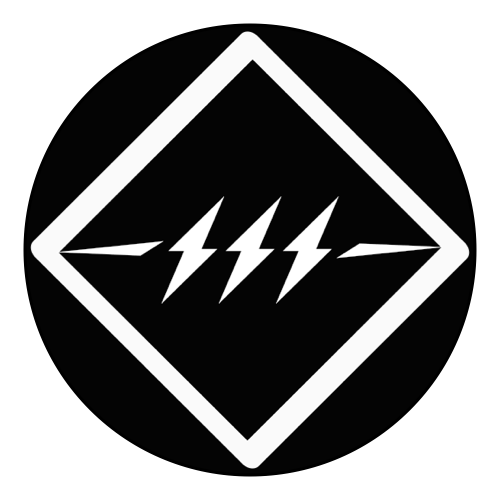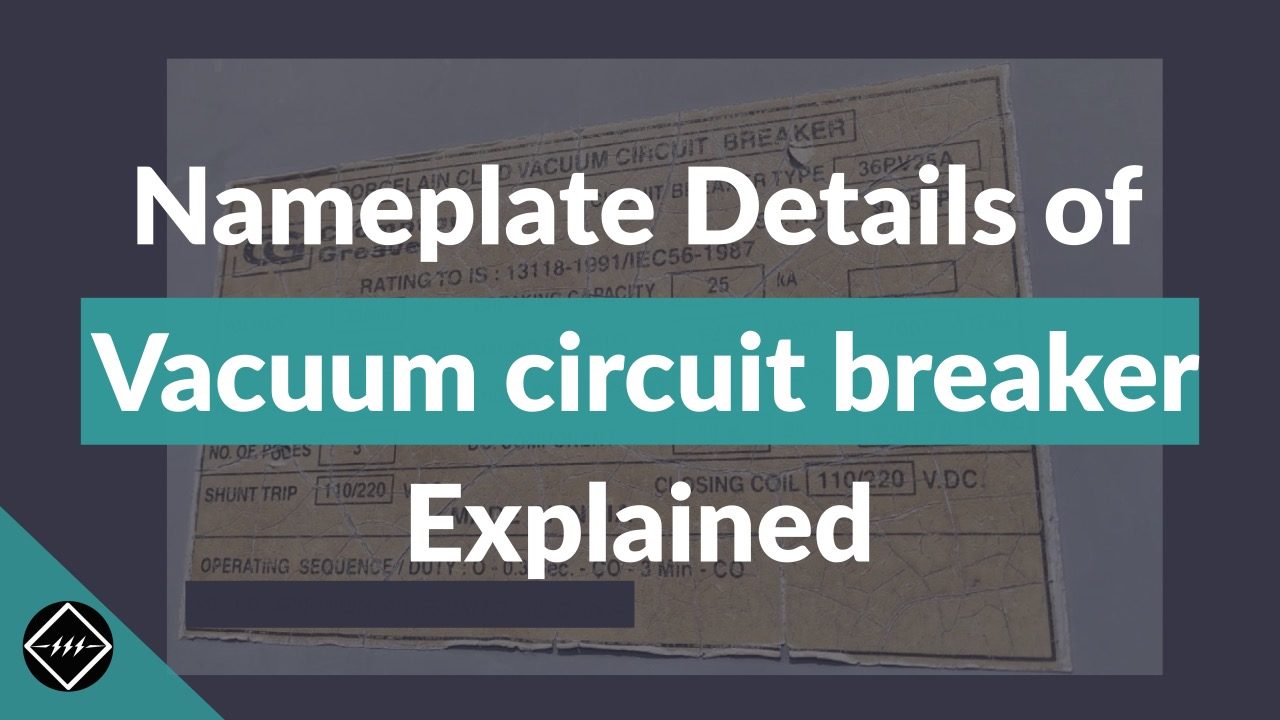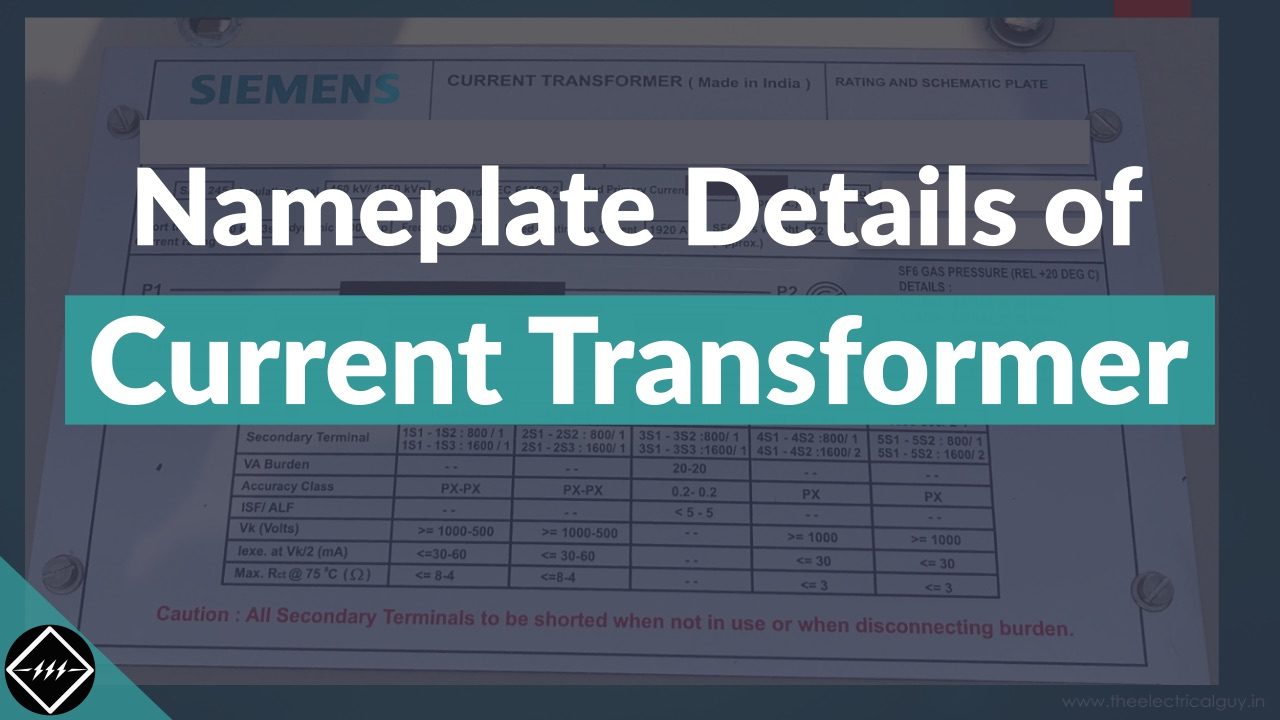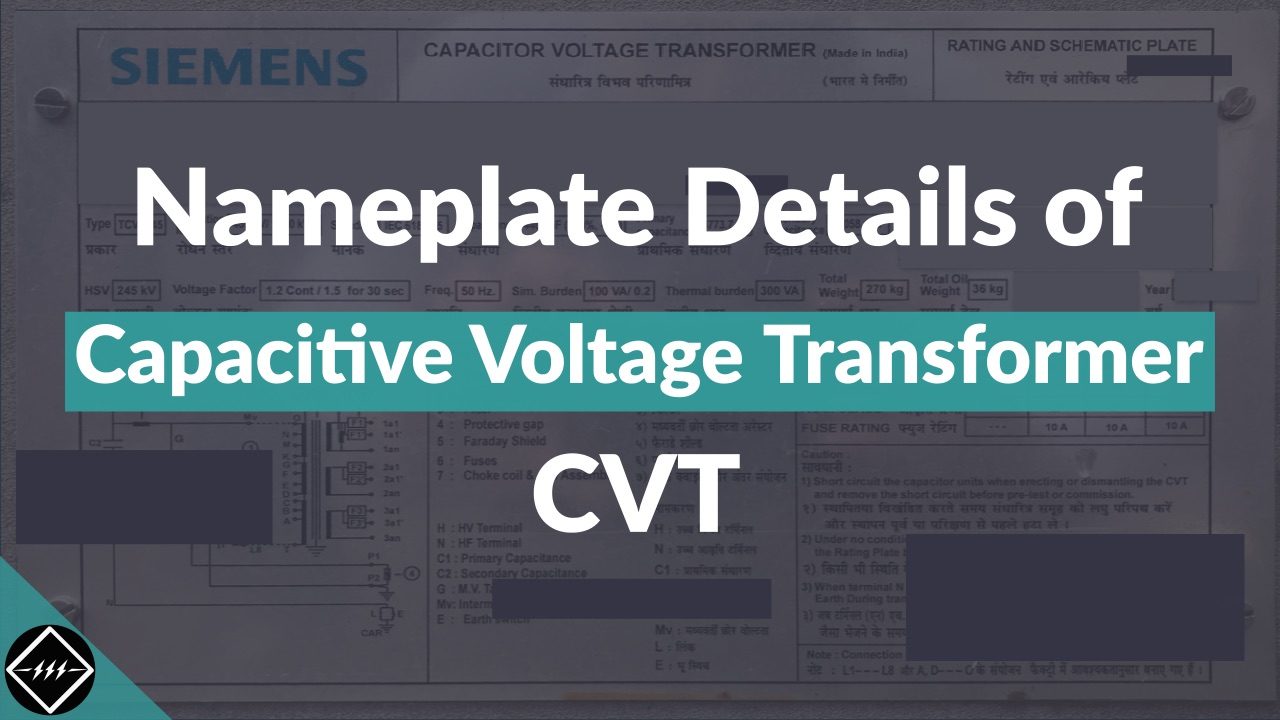Isolator/Disconnector Nameplate Details | Explained
Isolator/Disconnector Nameplate Details | Explained https://www.theelectricalguy.in/wp-content/uploads/2020/07/DS-1024x576.jpg 1024 576 Gaurav J Gaurav J https://secure.gravatar.com/avatar/87a2d2e0182faacb2e003da0504ad293?s=96&d=mm&r=gIn this tutorial, you’ll understand the parameters mentioned on a nameplate of isolator/disconnector. So, let’s start.
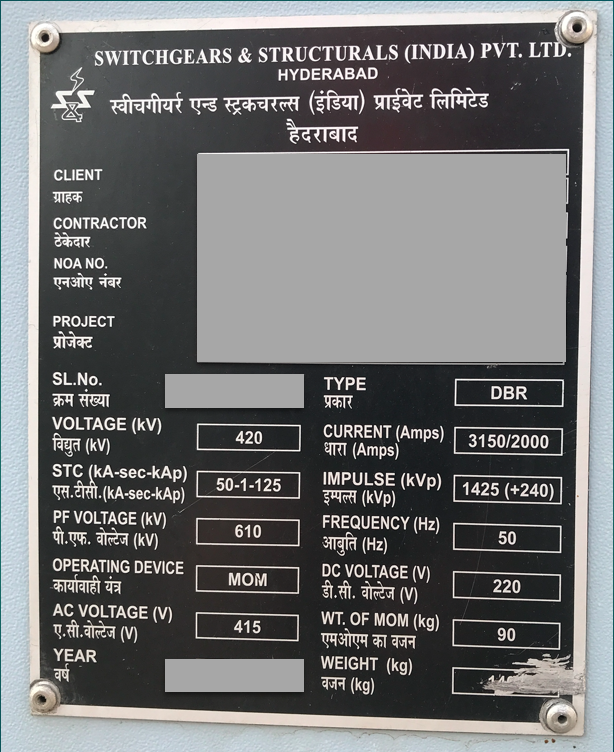
On the top section of the nameplate, details of customer & project are mentioned.
Rated Voltage
Rated voltage is the “Highest system voltage” for which breaker is designed. This voltage is mentioned in kV rms or volt rms and refers to phase to phase voltage of 3 phase system.
Most of the time people gets confused between rated voltage and normal voltage. Rated voltage is the highest voltage of a system for which the system is designed. Whereas, normal voltage is the voltage which will remain in the system normally. So, in this case 420kV is the rated voltage and 400kV is it’s normal voltage. Similarly, for 245kV voltage level, rated voltage is 245kV and the normal voltage is 220kV. For 145kV, rated voltage is 145kv and normal voltage is 132kV.
Short time current & Making Current (50-1-125)
This is a short circuit current (50kA) of the system which may occur in case of fault. And this current may remain in the system for 1 sec. So, the isolator is cable of carrying 50kA short circuit current for 1 sec. The next value I.e. 125kA peak indicates the making current.
If the circuit breaker closes during the existing fault condition, current may increase to a very high value during the first cycle. Therefore, the isolator must withstand this high current and the mechanical forces caused by this current. This current is called as “short circuit making current”. Or it is also called as Rated peak withstand current.
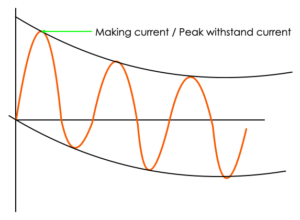
It is generally, 2.5 times the rated short circuit current at 50HZ frequency. It is referred in kA peak, as it remain for very short time. So, if you multiple 2.5 with 50kA, that will give us 125kA as the making current.
Power frequency & Lighting impulse voltage
Power frequency withstand voltage can be caused by these reasons
- Phase to earth faults
- Load rejection
- Ferro resonance
- Ferranti effect
And hence, isolator shall withstand power frequency voltage caused by these reasons. IEC has defined the level of power frequency voltage that can appear in the system. Isolator has to undergo power frequency withstand test, in which power frequency voltage is applied to the circuit breaker for 1 min. So, this 610kV rms represents that the isolator can withstand power frequency voltage of 610kV
Lighting impulse voltage is generally generated due to lighting strokes. And of course, breaker has to withstand these voltages too. Based on the experience and system studies, IEC has defined the values for this also. Breaker has to undergo test for this also.
Please note, these value for insulation level is for altitude level less than or equal to 1000 meter above sea level. If the altitude level is more than 1000 meters, an altitude correction factor needs to applied to these value. For instance, the values 610kV & 1425kVp are for altitude of 1000 meter. If the altitude level is let’s say 1200 meter, then defiantly these values will change. It will be more than the values specified on the nameplate shown.
Operating Device
On the nameplate shown above it is mentioned as “MOM”. MOM indicates Motor Operated Mechanism. Disconnector or isolators can be provided with two types of operating mechanism, Manual operated or Motor operated. Choice of this totally depends up on the customer. Generally, for 145kV & below rating Manual operated mechanism is preferred. And for 245kV & above Motor operated mechanism is preferred.
AC voltage
This indicates the voltage on which motor operates. Generally, 3 phase induction motors are used in isolators which operates on 415V AC.
Year
This indicates the year in which the isolator is manufactured.
Type (Type of Isolator)
On the nameplate it is mentioned as “DBR”. DBR stands for Double Break Type Disconnector. If you see, generally, four main types of disconnectors are used.
- Double Break Type (DBR) — Used between 11kV to 420kV
- Horizontal Centre Break (HCB) — Used between 11kV to 420kV
- Pantograph (PG) — Used between 245kV to 420kV
- Knee Type — Mainly preferred for 800kV
Rated Current
This is the rated current for which isolator is designed. This isolator can carry 2000A or 3150A normally without any problem.
Frequency
It is the power frequency on which electricity is generated, transmitted and distributed. In some countries it is 50Hz and in some it is 60Hz. For our case, it is 50HZ.
DC voltage
This is the control voltage which is needed inside the control box of isolator. Two variants of control voltage are generally used in India I.e. 110V Dc or 220V DC.
Weight
Two weights are given on the nameplate. One is for motor operated mechanism & another is for complete isolator.
So, this covers all the parameters that are mentioned on the nameplate of a isolator or disconnector. You can also check out nameplate details of other substation equipment like Circuit Breaker, CVT, CT, transformer, etc. Click below to know more.
- Posted In:
- Nameplate Details
- Tutorials
Gaurav J
Electrical Engineer. Content Creator. Currently working with a High & Extra High Voltage Switchgear Industry.
All stories by: Gaurav J

